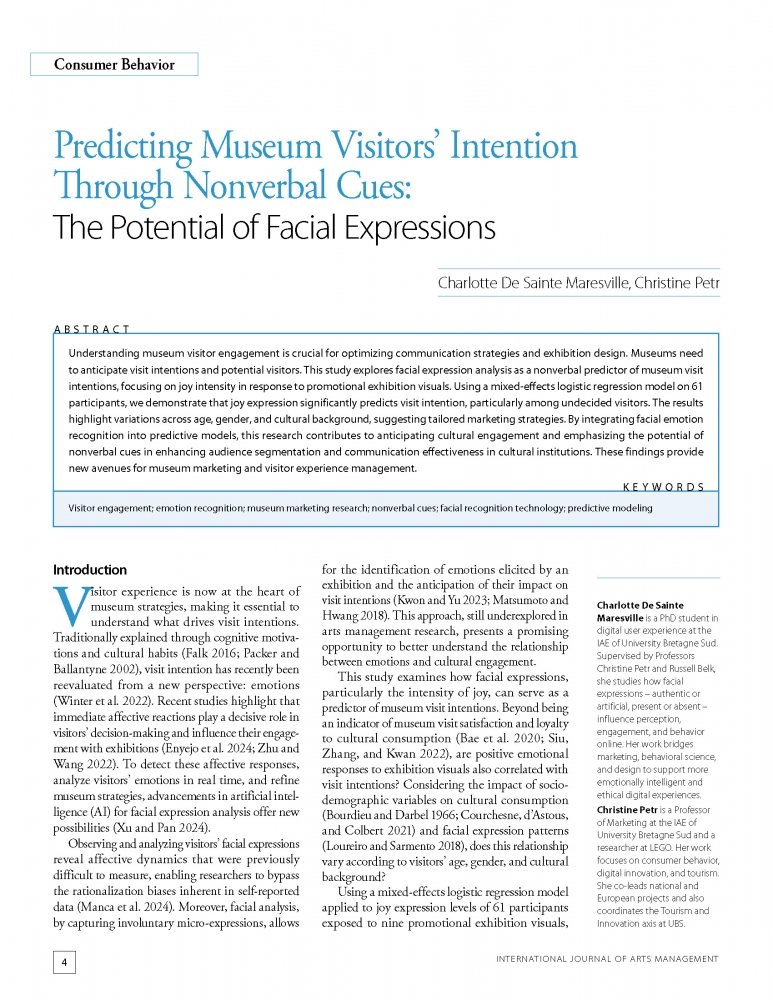Predicting Museum Visitors’ Intention Through Nonverbal Cues: The Potential of Facial Expressions
Product: Article
$21.00 CA
Charlotte De Sainte Maresville, Christine Petr
Charlotte De Sainte Maresville is a PhD student in digital user experience at the IAE of University Bretagne Sud. Supervised by Professors Christine Petr and Russell Belk, she studies how facial expressions – authentic or artificial, present or absent –influence perception, engagement, and behavior online. Her work bridges marketing, behavioral science, and design to support more emotionally intelligent and ethical digital experiences.
Christine Petr is a Professor of Marketing at the IAE of University Bretagne Sud and a researcher at LEGO. Her work focuses on consumer behavior, digital innovation, and tourism. She co-leads national and European projects and also coordinates the Tourism and Innovation axis at UBS.
ABSTRACT
Understanding museum visitor engagement is crucial for optimizing communication strategies and exhibition design. Museums need to anticipate visit intentions and potential visitors. This study explores facial expression analysis as a nonverbal predictor of museum visit intentions, focusing on joy intensity in response to promotional exhibition visuals. Using a mixed-effects logistic regression model on 61 participants, we demonstrate that joy expression significantly predicts visit intention, particularly among undecided visitors. The results highlight variations across age, gender, and cultural background, suggesting tailored marketing strategies. By integrating facial emotion recognition into predictive models, this research contributes to anticipating cultural engagement and emphasizing the potential of nonverbal cues in enhancing audience segmentation and communication effectiveness in cultural institutions. These findings provide new avenues for museum marketing and visitor experience management.
KEYWORDS
Visitor engagement; emotion recognition; museum marketing research; nonverbal cues; facial recognition technology; predictive modeling
